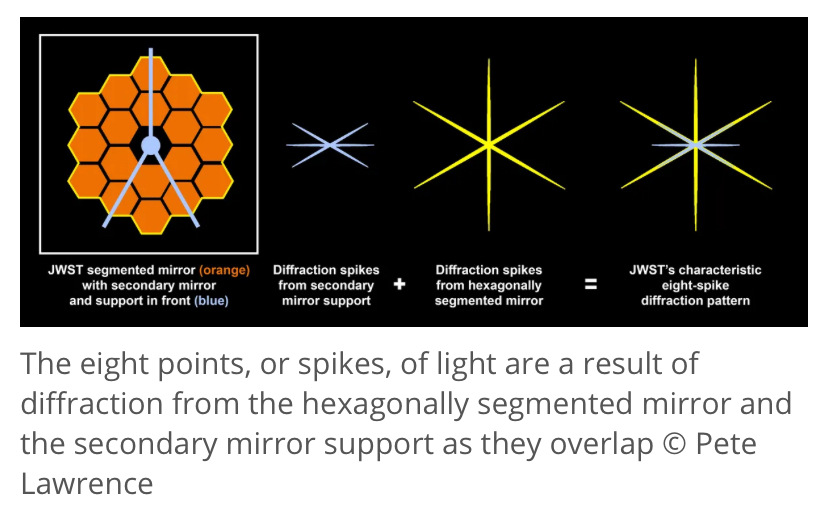What's a carbon dust shell and why's that cool?
@cyberpunk007@lemmy.ca A carbon dust shell is a layer of carbon-rich material expelled from a star in it's later stages of life in which a star ejects these shells due to stellar instability since they are the lighter, outer elements of a star.
It's cool because JWST could even resolve detail like that!! We can also learn more about the carbon chemistry of the system, binary dynamics, and the history of the system :D
Thank you :)
It can resolve that, but can't see the secret Nazi bases on the moon? Must be fake.
(I'm joking - this is awesome)
Ooh, I guess it can discern surface of close stars as well? Like, the betelgeuse image but in better resolution.
Carbon is pretty important for earth, and it's unclear how we have so much of it. Dual star systems shooting out carbon at 1% the speed of light kind of explains it pretty well: https://science.nasa.gov/missions/webb/webb-watches-carbon-rich-dust-shells-form-expand-in-star-system/
Count the rings to see how old the star is.
As they swing past one another (within the central white dot in the Webb images), the stellar winds from each star slam together, the material compresses, and carbon-rich dust forms. Webb’s latest observations show 17 dust shells shining in mid-infrared light that are expanding at regular intervals into the surrounding space.
[...]
Like clockwork, the stars’ winds generate dust for several months every eight years, as the pair make their closest approach during a wide, elongated orbit.
Basically you're looking at dust showing a pattern of stellar turbulence. There's a nice video clip in the article that shows how the two stars orbit each other. Because the orbit is consistent, it is producing these compression waves every 8 years when the stars are closest to each other.
Also interesting:
The dust’s distribution isn’t uniform. Though this isn’t obvious at first glance, zooming in on the shells in Webb’s images reveals that some of the dust has “piled up,” forming amorphous, delicate clouds that are as large as our entire solar system.
Later discovered that the JWST just has astigmatism.
 I remember seeing this explained when Webb first launched and found it really interesting
I remember seeing this explained when Webb first launched and found it really interesting
Someone get JJ Abrams off the camera please.
I have so many questions. Like, was there supposed to be a link to an article? This picture alone doesn’t really answer any questions.
It's a Mastodon toot, they only have like 180 characters or something
Yeah, it'd be a shame if they had to sacrifice some of those mentions and hashtags to relay meaningful information.
If you wanna be twitter you behave like twitter.
Oh, that makes sense.
Many instances allow much longer messages, but it depends on the admin and how they see it. Could even be thousands of characters in some cases.
Anyway, mastodon integration is nice, but there are some serious issues too.
… the Fresnel lens had a stroke?
Sounds like some epic rhythmic banger
Cool cool cool. I imagine this potentially means we're seeing the development of a 17 object solar system? Maybe with some of those being asteroid belts?
That is pretty cool! I wonder what each ring represents in terms of time. I imagine it's fairly rapid (like dozens of years?)
Science
Studies, research findings, and interesting tidbits from the ever-expanding scientific world.
Subcommunities on Beehaw:
Be sure to also check out these other Fediverse science communities:
This community's icon was made by Aaron Schneider, under the CC-BY-NC-SA 4.0 license.
